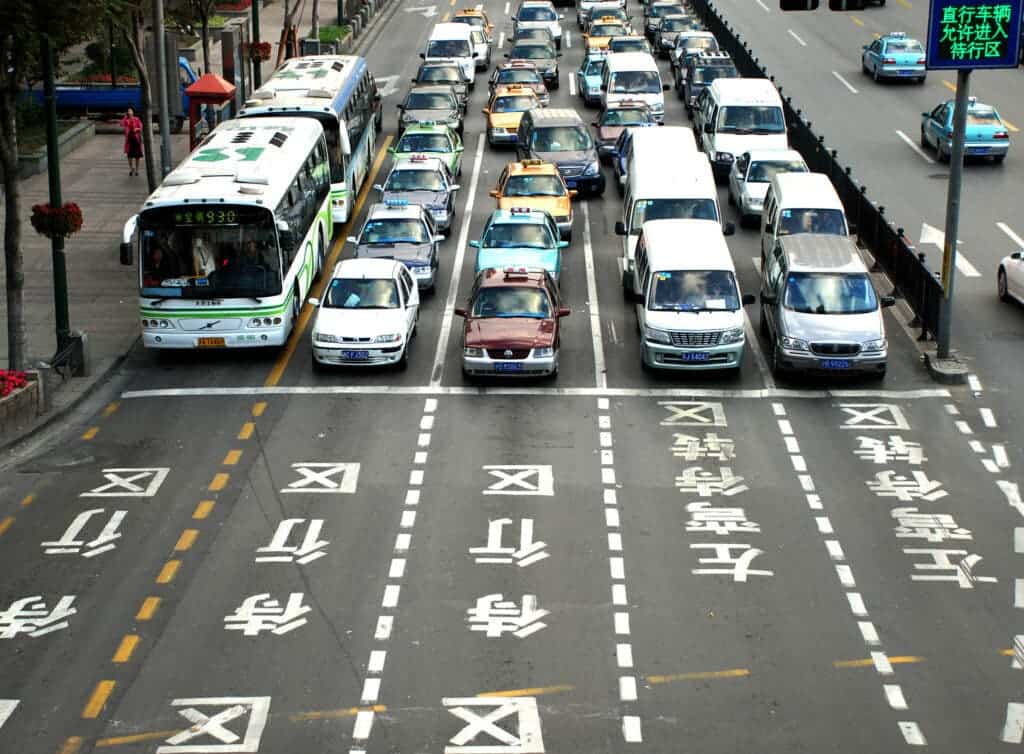
Year-by-year, traffic has only gotten worse in most cities across the world. This is particularly true for cities in Asia where the number of traffic congestions has grown exponentially due to rapid urbanization and increased median income. In the Indian capital of Delhi, for instance, drivers spend as much as 58% more time stuck in traffic compared to drivers in any other city in the world. In the face of this mounting economic, health, and environmental challenge, technology may be one of our best allies when it comes to reducing time spent in traffic.
Expanding roadways, improving public transit, and encouraging alternative forms of mobility are definitely important and have their part to play in improving traffic. However, out of all possible solutions, intelligent traffic management systems driven by artificial intelligence (AI) may have the best return on investment — by far.
Such systems employ machine learning, computer vision, and other AI technologies to make sense of large swaths of data collected by sensors and cameras that record road activity, even if markings haven’t been recently repainted by line marking machines and are poorly visible. The systems can then provide insights that local operators can use to make real-time decisions to optimize traffic, such as changing the timing of red lights.
Chinese tech giant Alibaba has already implemented a traffic management AI called City Brain in 23 cities across the country, as well as in other countries such as Malaysia. The platform crunches data in real-time from video cameras in intersections and GPS data from local cars and buses to coordinate more than 1,000 road signals around a city.
After implementing Alibaba’s solution, Hangzhou, a city of 7 million, dropped from China’s fifth most congested cities to 57th on the list. As a result, commutes have shortened drastically. Also, first responders such as fire trucks and ambulances have halved the amount of time it took to respond to emergencies.
“The cities in China are probably facing more challenges than any other city,” Wang Jian, chairman of Alibaba’s technology steering committee, told Techwire Asia.
Elsewhere, at Yanbu Industrial City, a major industrial hub in Saudi Arabia, Huawei has implemented an AI-driven traffic solution that comprises over 250 HD cameras operating at 16 major road intersections. The system supplies high-quality images and videos that feed real-time data to local officials that they can use to immediately take action or plan a long-term strategy.
Huawei’s solution, called Intelligent Traffic Management System (ITMS), runs smart algorithms that identify traffic violations in real-time, including red lights, crossing lanes, reverse driving, and lane marking infractions. Although the system runs about 100,000 data records, it is able to respond within seconds.
In the United States, the city of Pittsburgh has deployed the Surtrac intelligent traffic signal control system at 50 intersections that not only reduced travel times by 26% and wait times at intersections by 41% but also curbed transport emissions by 21%.
The next step is to have traffic signals talk to cars. Engineers in Pittsburgh have already installed short-range radios at 24 intersections. Such systems could then let drivers know of upcoming traffic conditions or inform them that lights are about to change, increasing safety and relieving congestion. Traffic engineers nationwide have not had a tool to give them anywhere near real-time estimation of transportation network states — but that has now changed.
We could be heading towards a transportation breakthrough. AI is poised to revamp urban transportation, relieving bottlenecks and chokepoints that routinely snarl our urban traffic. This could not only reduce congestion and reduce travel time but also reduce emissions (by reducing the time spent in traffic). It won’t happen overnight, but it could happen soon.






